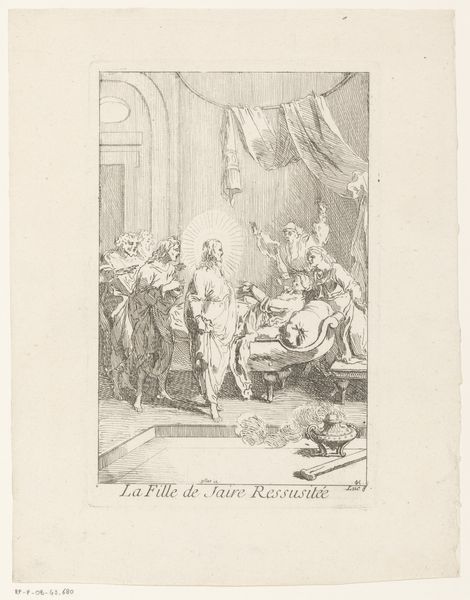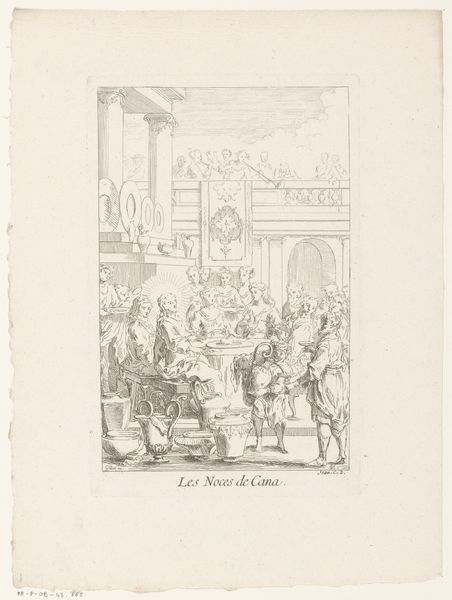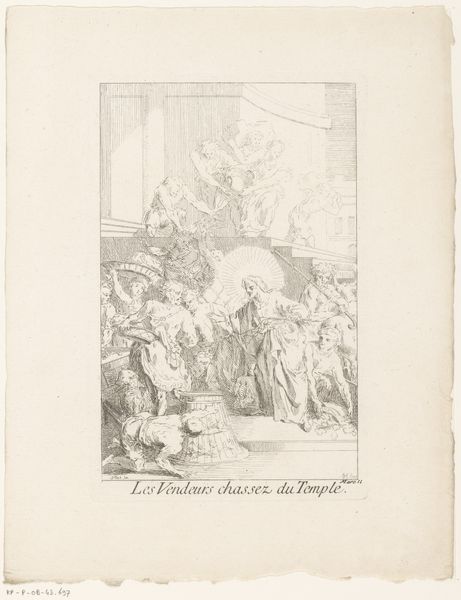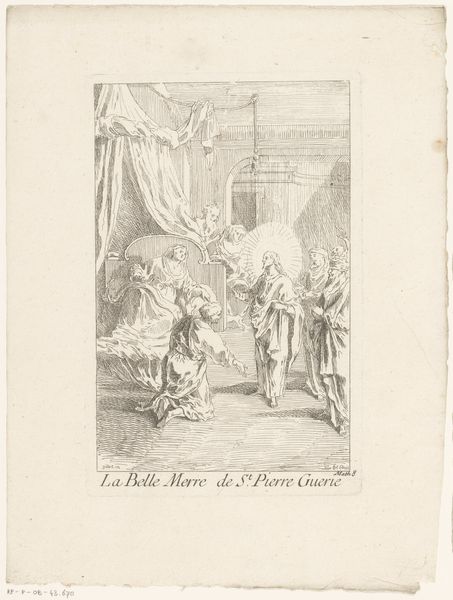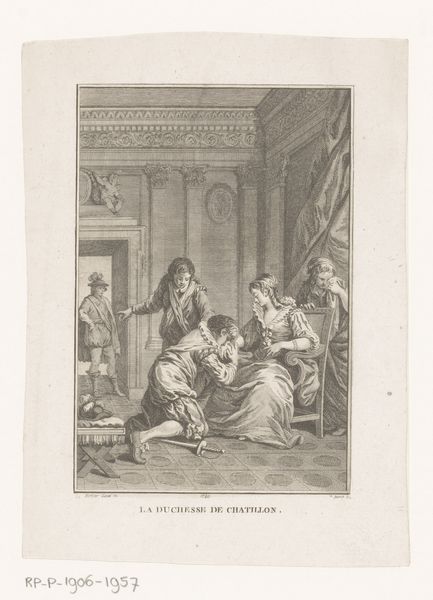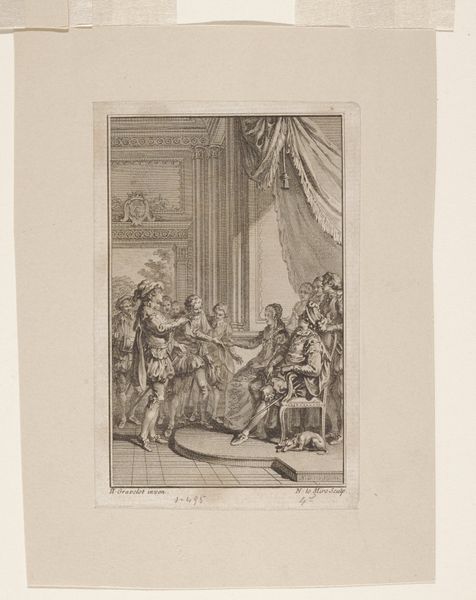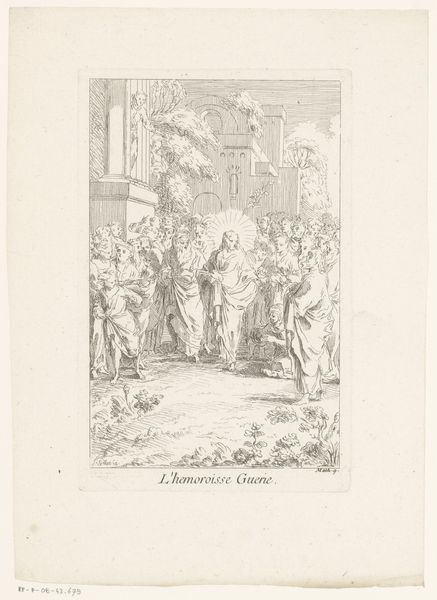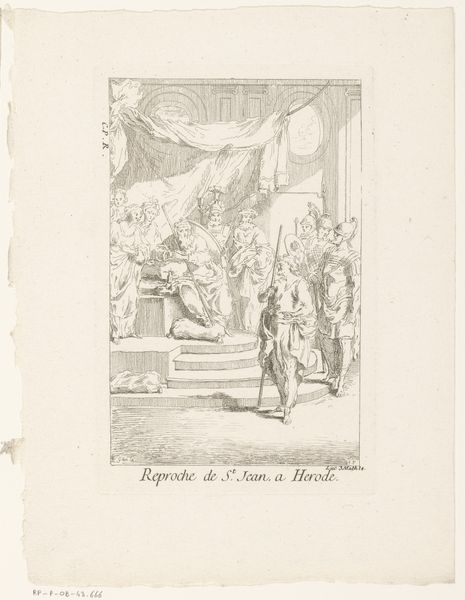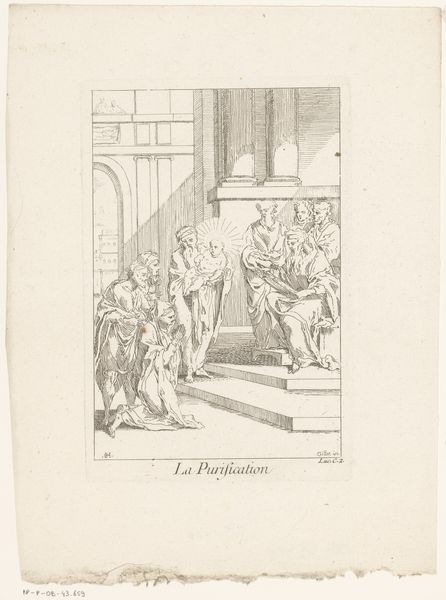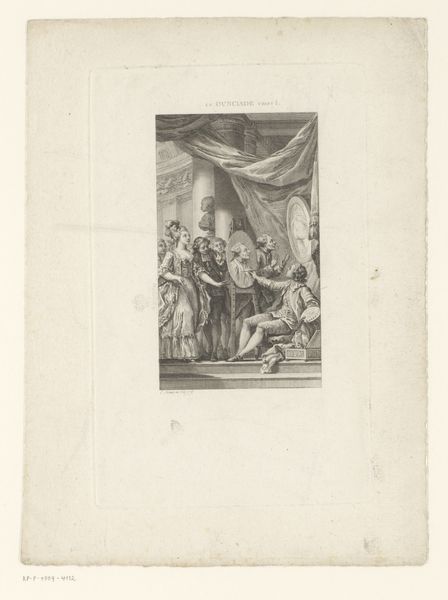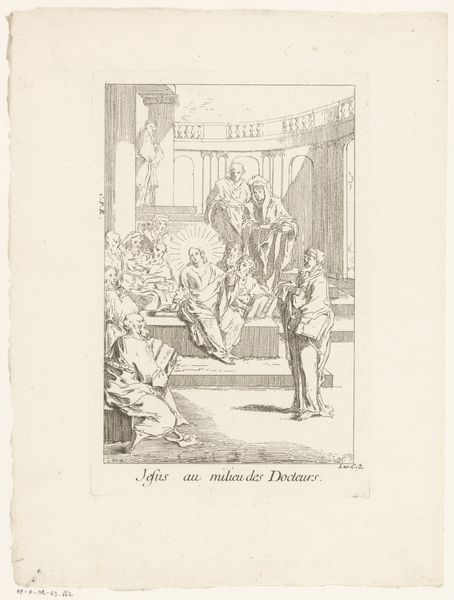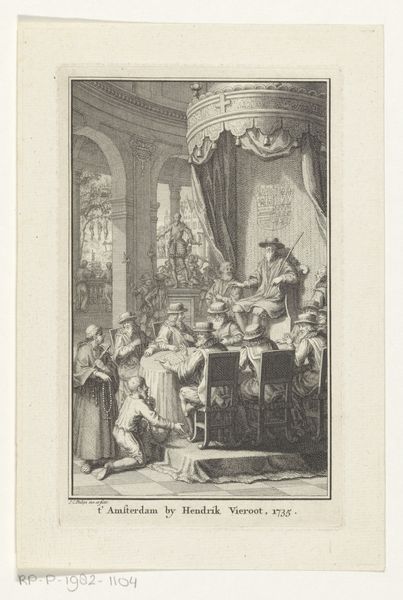
drawing, pen, engraving
#
drawing
#
light pencil work
#
narrative-art
#
baroque
#
pen sketch
#
old engraving style
#
personal sketchbook
#
ink drawing experimentation
#
pen-ink sketch
#
pen work
#
sketchbook drawing
#
pen
#
history-painting
#
storyboard and sketchbook work
#
sketchbook art
#
engraving
Dimensions: height 197 mm, width 127 mm
Copyright: Rijks Museum: Open Domain
Curator: Here we have “Christus te gast bij Simon de Farizeeër,” or “Christ at the House of Simon the Pharisee,” by Gabriel Huquier, crafted before 1732. It’s an engraving, a narrative scene rendered with pen. What do you make of it? Editor: My first impression is hushed drama. There's this crowded table, all men except for one figure kneeling, seemingly weeping or bathing feet, everything bathed in soft, grey light from the artists careful ink work. Curator: The setting is charged, certainly. The story comes from the Gospel of Luke. Jesus is invited to dine with Simon, a Pharisee, and a woman—considered a sinner by societal standards—washes Jesus' feet with her tears and dries them with her hair. It's about judgement, forgiveness, and social upheaval. Editor: Social upheaval, yes. Look at how rigid everyone at the table seems! I think the rigid posture reflects the Pharisee’s moral indignation, the clear focus is on her display. I wonder, was Huquier drawn to the radical vulnerability shown by the woman and what that represented? Curator: The politics of imagery in that period often hinged on contrasting piety and social transgression. Remember, engravings like these often circulated widely, shaping public understanding of morality tales. Editor: It’s all so theatrical, I keep thinking. The draped canopy overhead, like a stage curtain, that amplifies everything happening below. Huquier really framed this for impact. Curator: Consider how such images enforced societal norms, especially regarding women. They served as warnings and reinforced expectations within specific class structures. Editor: It's a complex dance between the intimate act of contrition and the public stage of judgment. I suppose I look for glimmers of the personal that cut through the constraints in these kinds of prints. Curator: Indeed. Seeing it displayed in the Rijksmuseum reminds us how deeply implicated art is in shaping and reflecting social values over centuries. Editor: Absolutely. It leaves me contemplating the personal rebellions, then and now, that are couched in these images and what kind of echoes are felt when viewing this scene in our current, contentious times.
Comments
No comments
Be the first to comment and join the conversation on the ultimate creative platform.
